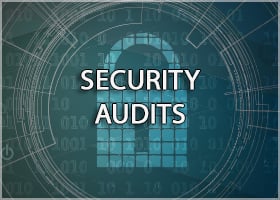Hackers show no signs of abating their attacks on businesses. The data that businesses generate is just too valuable for cybercriminals to ignore.
Although the risks are numerous and the landscape complex, there are a number of things organizations can do to increase their data security. In this article, we will discuss data security management best practices and look at 5 things you can do to increase your organization’s data security.
Effective data security management is built on a core philosophy of resilience and vigilance. Your organization’s level of resilience can be measured by your data security policies, disaster recovery plan, data backup procedures, and frequency of security audits and awareness training.
Here are 5 best practices we recommend to ensure a robust data security management program.
1. Recognize and Protect Your Valuable Data
 As network boundaries become less clear, the old method of securing the perimeter is no longer enough protection. Instead, the data itself is what needs protection.
As network boundaries become less clear, the old method of securing the perimeter is no longer enough protection. Instead, the data itself is what needs protection.
You need to develop a holistic view of your data environment. The goal here is to understand exactly what data you need to protect. Not all data is alike. Many companies find that their most valuable data makes up between 5% and 10% of the total volume of data.
When you understand what data you have and what needs the most protection, you’ll be able to develop a security plan.
2. Strong Access Management
A common hacker ploy is to try to compromise privileged accounts. To minimize your risk, practice good credential hygiene. Update account privileges regularly, remove unused profiles and orphaned accounts, and make sure users have only the privileges they need.
Here are some additional access management best practices that we recommend:
- Centralized sign-on procedures and identity management
- Identification and elimination of high-risk systems, such as unpatched or unsupported systems
- Audit of user accounts on a regular basis
3. Comprehensive Security Audits
 You should perform a comprehensive security audit on a regular basis to look for gaps in staff awareness, outdated or vulnerable systems, shadow IT, and orphaned accounts. The frequency of your audits depends on factors such as your business model and compliance requirements. At a minimum, an organization should perform a security audit annually. However, organizations in high-risk industries should audit every 6 months.
You should perform a comprehensive security audit on a regular basis to look for gaps in staff awareness, outdated or vulnerable systems, shadow IT, and orphaned accounts. The frequency of your audits depends on factors such as your business model and compliance requirements. At a minimum, an organization should perform a security audit annually. However, organizations in high-risk industries should audit every 6 months.
A security audit will help you identify security weaknesses and gaps. Use exercises like phishing simulations to assess security awareness levels among staff members.
4. Review and Revise Authentication Protocols
Unused or weak user accounts are a prime target for hackers. To avoid common security pitfalls, make sure you follow the most recent authentication recommendations and best practices. For example, security experts now recommend multifactor authentication for user accounts, strong passwords, and regular password rotation.
5. Review and Revise Security Policies and Procedures
The risks to your data are changing and evolving. New technologies such as IoT and the cloud offer new capabilities, but they also introduce new attack vectors.
The best way to increase your data security is to think of it as a living process, one that needs regular attention. If you make sure to audit and review your security program annually or semi-annually, you will be in a good position to recognize and respond to emerging threats.
The 5 steps outlined in this article are a framework for continued improvement. Together, they create an agile and responsive approach to a changeable threat environment.
For help with auditing and revising data security policies and procedures, many organizations turn to third-party service providers. A security service provider can offer support such as consultation, solution design, and awareness training.
Learn more about Solutions II Security Services.




Comment Form